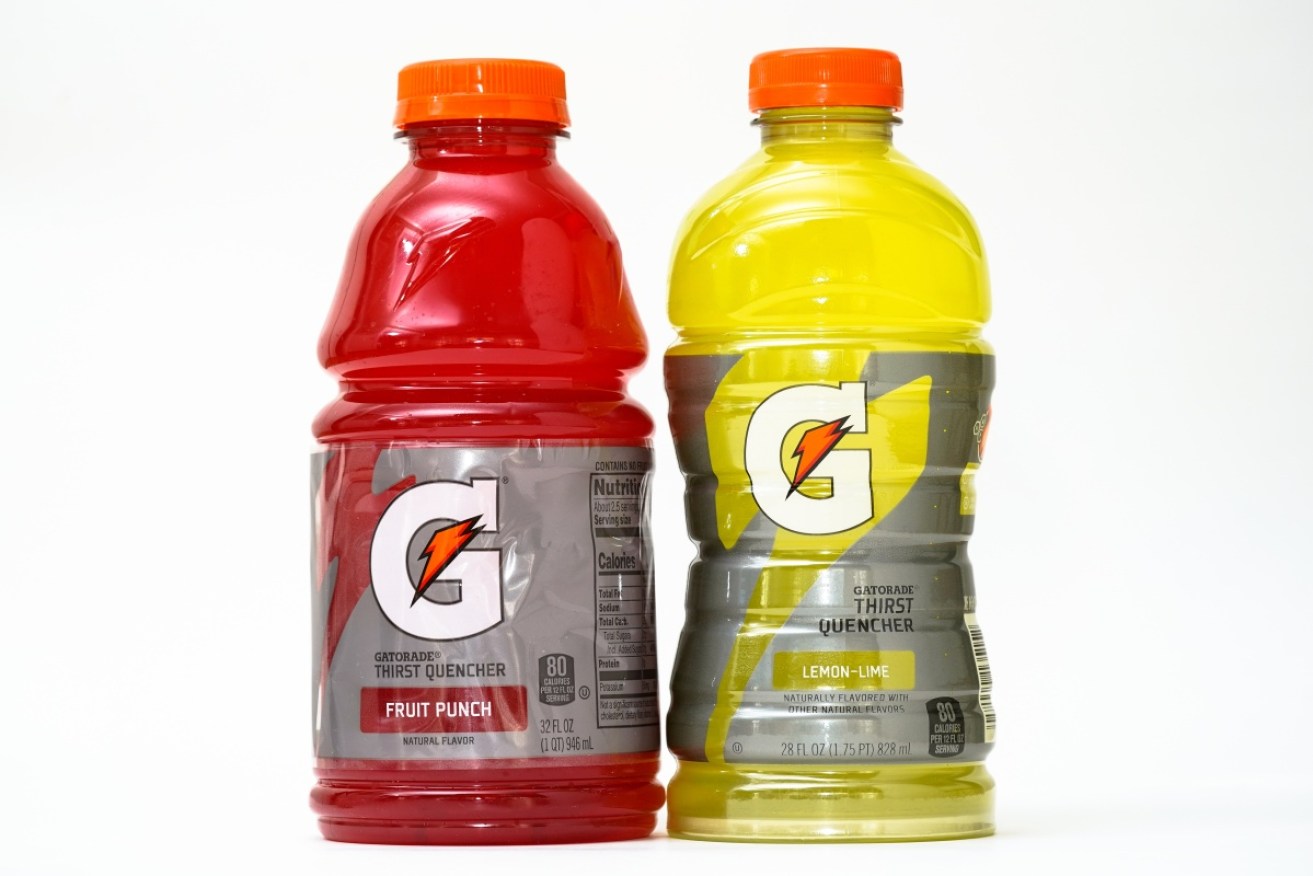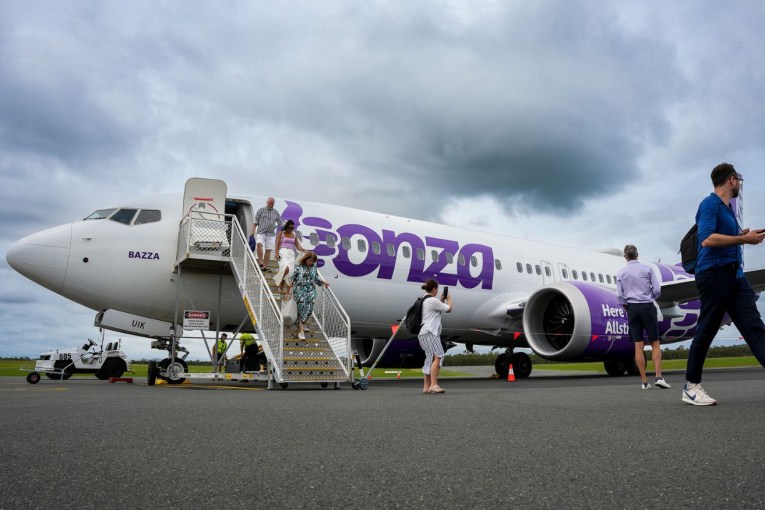Shrinkflation is downsizing what we buy

From corn chips to Gatorade, producers are quietly shrinking package sizes without cutting prices. Photo: AP
It’s the inflation you’re not supposed to see.
From toilet paper to yoghurt and coffee to corn chips, manufacturers are quietly shrinking package sizes without lowering prices. It’s dubbed “shrinkflation,” and it’s accelerating worldwide.
In the US, a small box of Kleenex now has 60 tissues; a few months ago, it had 65. Chobani Flips yoghurts have shrunk by more than 10 per cent.
In Britain, Nestle trimmed its Nescafe Azera Americano coffee tins from 100 grams to 90 grams. In India, a bar of Vim dish soap has shrunk from 155 grams to 135 grams.
Shrinkflation rages in times of high inflation
Shrinkflation isn’t new, experts say. But it proliferates in times of high inflation as companies grapple with rising costs for ingredients, packaging, labour and transportation.
Global consumer price inflation was up an estimated 7 per cent in May, a pace that would likely continue until September, according to S&P Global.
“It comes in waves. We happen to be in a tidal wave at the moment because of inflation,” said Edgar Dworsky, a consumer advocate and former assistant attorney-general in Massachusetts who has documented shrinkflation on his Consumer World website for decades.
Mr Dworsky began noticing smaller boxes in the cereal aisle last year, and shrinkflation has ballooned from there.
He can cite dozens of examples of classic US brands, from Cottonelle Ultra Clean Care toilet paper, which has shrunk from 340 sheets a roll to 312, to Folgers coffee, which downsized its 51-ounce (1.44 kilogram) container to 43.5 ounces but still says it will make up to 400 cups. (Folgers says it’s using a new technology that results in lighter-weight beans.)
Mr Dworsky said shrinkflation appealed to manufacturers because they knew customers would notice price increases but wouldn’t keep track of net weights or small details, like the number of sheets on a roll of toilet paper. Companies can also employ tricks to draw attention away from downsizing, like marking smaller packages with bright new labels that draw shoppers’ eyes.
That’s what Fritos did. Bags of Fritos Scoops marked “Party Size” used to be 18 ounces (510 grams); some are still on sale at a grocery chain in Texas. But almost every other big chain is now advertising “Party Size” Fritos Scoops that are 15.5 ounces — and more expensive.
Shrinking of Gatorade bottles acknowledged
PepsiCo didn’t respond when asked about Fritos. But it did acknowledge the shrinking of Gatorade bottles.
The company recently began phasing out 32-ounce (900-gram) bottles in favour of 28-ounce ones, which are tapered in the middle to make it easier to hold them.
The changeover had been in the works for years and wasn’t related to the current economic climate, PepsiCo said. But it didn’t respond when asked why the 28-ounce version was more expensive.
Likewise, Kimberly-Clark – which makes both Cottonelle and Kleenex – didn’t respond to requests for comment on the reduced package sizes.
Some companies are straightforward about the changes. In Japan, snack maker Calbee Inc announced 10 per cent weight reductions – and 10 per cent price increases – for many of its products in May, including veggie chips and crispy edamame. The company blamed a sharp rise in the cost of raw materials.
Domino’s Pizza announced in January it was shrinking the size of its 10-piece chicken wings to eight pieces for the same $US7.99 ($11.10) takeaway price. Domino’s cited the rising cost of chicken.
http://twitter.com/WallStreetSilv/status/1534399827873767424
In India, “down-switching” – another term for shrinkflation – is mostly done in rural areas, where people are poorer and more price sensitive, said Byas Anand, head of corporate communications for Dabur India, a consumer care and food business. In cities, companies simply jack up prices.
“My company has been doing it openly for ages,” Mr Anand said.
Some customers who have noticed the downsizing are sharing examples on social media. Others say shrinkflation is causing them to change their shopping habits.
Alex Aspacher does a lot of the grocery shopping and meal planning for his family of four in Haskins, Ohio. He noticed when the one-pound (450-gram) package of sliced Swiss cheese he used to buy shrank to 12 ounces but kept its $9.99 price tag. Now, he hunts for deals or buys a block of cheese and slices it himself.
Speed of change surprises consumers
Mr Aspacher said he knew prices would rise when he started reading about higher wages for grocery workers. But the speed of the change – and the shrinking packages – surprised him.
“I was prepared for it to a degree, but there hasn’t been a limit to it so far,” he said.
“I hope we find that ceiling pretty soon.”
Sometimes the trend can reverse. As inflation eases, competition might force manufacturers to lower their prices or reintroduce larger packages. But Mr Dworsky said once a product got smaller, it often stayed that way.
“Upsizing is kind of rare,” he said.
Smells like ‘profiteering’
Hitendra Chaturvedi, a professor of supply chain management at Arizona State University’s WP Carey School of Business, said he had no doubt many companies were struggling with labour shortages and higher raw material costs.
But in some cases, companies’ profits – or sales minus the cost of doing business – are also increasing exponentially, and Professor Chaturvedi finds that troubling.
He points to Mondelez International, which took some heat this spring for shrinking the size of its Cadbury Dairy Milk bar in Britain without lowering the price.
The company’s operating income climbed 21 per cent in 2021, but fell 15 per cent in the first quarter as cost pressures grew. By comparison, PepsiCo’s operating profit climbed 11 per cent in 2021 and 128 per cent in the first quarter.
“I’m not saying they’re profiteering, but it smells like it,” Professor Chaturvedi said.
“Are we using supply constraints as a weapon to make more money?”
-AP








